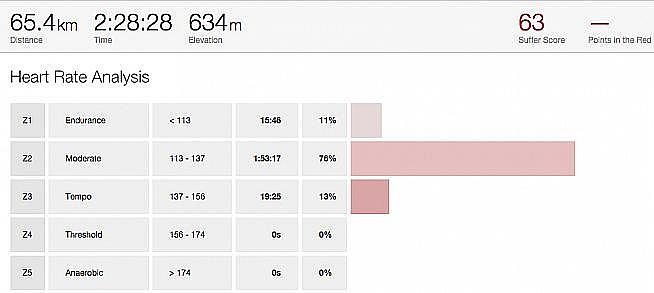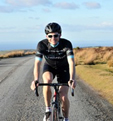It's that time of year again when all the magazines and blogs are full of contradictory advice about base or endurance training - Why should you do it? How should you do it? When should you do it? Blah Blah Blah...
Look - most of you will know by now (because I am like a stuck record on the subject) that fitness is constructed gradually from the ground up.
Everywhere you look in life you see people trying to take short cuts to success. I want to be an internet sensation - an overnight celebrity - but I reckon my chances are pretty slim as I don't look like Kim Kardashian.

Success generally comes from hard work, ability and in the case of cycling, being lucky enough to have parents that gave you good genetics.
Building fitness has to start somewhere every season and it can't be from peak fitness the season before. You can't keep thrashing those threshold and VO2Max intervals 12 months of the year - overtraining, exhaustion and injury will soon follow this type of training madness.
The vast majority of people I train are goal oriented and at this time of year they have decided a couple of target events for next year. Our training and coaching gets them ready for those events so that they are in peak form for the things they want to do well at. It's all pretty logical.
So where do we start? We start in November or December (it is a roughly 6 month process) with Endurance Training. I call it Endurance because the vast majority of events that my athletes choose are long bike rides. 100-300km or up to 12 hours in the saddle - these events require endurance!
What are the goals that people set? Generally they want to ride these really long rides as quickly as possible. Funny that! So it is just common sense (to me anyway) that if you want to ride a long way quickly, you first have to learn how to ride a long way slowly. This is what endurance training is all about.
I see a lot of people who are really good 50km riders. You normally see them half wheeling on club rides, thrashing around for Strava KOMs - if they could ride with a swagger they would. Invariably, after 70km or so the metaphorical wheels fall off and they have a tactical mechanical or something. Laters.
LSD or long steady distance rides are preparing the body to be able to do the other type of LSD - long speedy distance rides! Long steady distance teaches the body to burn fat as fuel as this is the greatest store of fuel we have in our bodies. Take a 60kg skinny rider with 10% body fat. Thats still 6kg of stored fat. It is generally agreed (I said generally so please no nit picking) that 1kg of fat contains around 8,000 calories of food energy. So even your skinny rider with 6kg of stored fat has around 50,000 calories of food energy to tap into - you could ride a long way on that all other things being equal (which they are not).
My point is this - to be good at endurance riding you need to be efficient at using fat as fuel and not rely too much on stored carbohydrates which won't keep you going for long. The harder you push the more carbs you use and the less fat you use. By riding slowly you rely much more on fat fuel and the body adapts to this and becomes better at using it - it's a wonderful thing!

So what if you don't have much time for LSD rides? OK there is a way of shortcutting some of this process - up to a point. Fasted rides, pre-breakfast, produce a low carbohydrate training environment, which is beneficial for fat burning metabolic adaption. Wake up, have a large black coffee, no milk or anything else and go for a 60 minute flat ride or 30-40 minutes on the turbo.
If you are planning on including some fasted rides in your training, it is essential that the intensity is kept low. You should stick to heart rate or power zones 1-2 where your body is best able to access its fat reserves for fuel. If you are tempted to go hard on these rides, you will only do it once I can assure you! Drink water only and take an energy bar with you just in case you bonk.
At the end of the day training has to be specific to the events that you are targeting, or the type of riding that you want to do. If you want to be a really fast 50km rider then fine you don't need massively deep endurance fitness.
If on the other hand you are doing the Etape, Gran Fondo New York, the Marmotte, Levi's Gran Fondo, or any of the Alpine Haute Routes that I am training people for next year, for example, then you do need to be building endurance fitness, starting with LSD.
It is definitely worth the investment if you have the time.
As ever I try to cut through the confusion out there and give you what is hopefully a common sense view on many of these training questions based from actual practical experience. As always please contact me if you have any further thoughts or questions at [email protected]. Enjoy your LSD!
Rob Wakefield is a fully qualified Level 3 Cycling Coach with the Association of British Cycling Coaches and founder of Propello, a cycling focused health and fitness business delivering Performance Training Programmes and Bespoke Coaching to cyclists anywhere in the world.
All cyclists who are looking to improve their speed, endurance or strength will benefit from a structured training programme. Propello Training will improve how your muscles, lungs and heart work and will enable your body to transport and utilise fuel effectively - making you faster and stronger for longer.
Click here to learn more about Propello.
0 Comments





